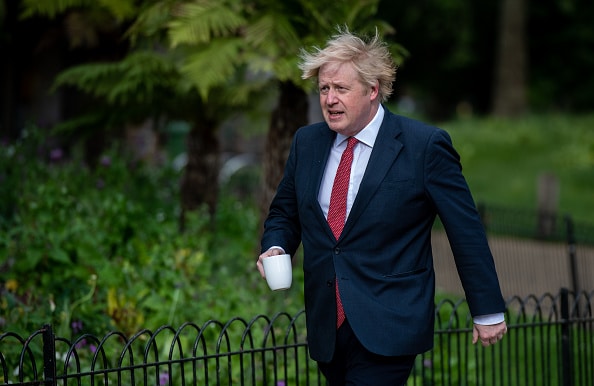TOPLINE – Boris Johnson’s plan to ease restrictions in England has raised a fresh set of questions about worker safety and the timing of his new “stay alert” message, and has set the U.K. prime minister on a collision course with devolved nations Scotland, Wales and Northern Ireland who are insisting their residents “stay at home” to beat coronavirus.
KEY FACTS
- Johnson addressed the U.K. on Sunday night to announce a slight easing of restrictions in England, but saying it was not time to end the lockdown this week.
- He unveiled a new message of “Stay alert, control the virus, save lives”, but the message is at odds with Scotland, Wales and Northern Ireland who are sticking with the original message of “Stay home, protect the NHS, save lives.”
- WORK: People who cannot work from home “should be actively encouraged” to return to work this week. Later, the government said the changes would come into effect from Wednesday.
- Johnson said this includes constructions and manufacturing workers, but his message has caused confusion over which professions would be allowed to return to work. Johnson also discouraged people returning to work in England from taking public transport, and said they should walk, drive or cycle instead.
- SCHOOLS: From June 1, the youngest school pupils, including reception, and primary students up to age 11, could return to the classroom. Secondary school pupils who have key exams next year could “get time with their teachers” before breaking for summer.
- BUSINESS: A phased reopening of shops could begin as early as June 1, while hotels and restaurants could open on July 1 at the earliest “provided they enforce social distancing,” Johnson said.
- LEISURE: People in England were told they can have an unlimited amount of daily exercise and can play sports in parks with the same members of their household. People can also meet up with one member of another household in a park, but maintain a two metre distance.
- TRAVEL: People who are travelling into the U.K. by air and other means will “soon” be put under quarantine. It is not yet known for how long, or when this will be enforced. But passengers from Ireland, and now France, are exempt from the rule.
WHAT TO WATCH FOR
The government will release 50-page guidance on the new rules on Monday afternoon.
ADDITIONAL INFO
For lockdown to be lifted altogether, the British government says that five tests need to be met: Ensuring the national health service can cope with the epidemic, a sustained fall in the daily death rate, a fall in the rate of infection or ‘R’, securing enough PPE to meet demand, and making sure that the risk of a second peak is low.
CHIEF CRITICS
There are a few, with most opposition centred on the government’s confusing messaging, short notice, lack of safety information for workers, and concerns that the new guidance leaves white collar staff protected, while factory and shop floor workers face the greatest risk.
The leaders of Scotland, Wales and Northern Ireland are united in their opposition to Johnson’s ambiguous “stay alert” message. Scotland’s first minister Nicola Sturgeon simply reinforced the original “Stay Home, Protect The NHS, Save Lives” message that her nation is sticking with. Welsh First Minister Mark Drakeford said his nation’s “stay at home” message remains.
Unions have criticised Johnson’s speech as not being well thought through, and say that the government should be issuing mandatory instructions to workplaces to ensure worker safety, and not just guidance.
Len McCluskey, general secretary of the U.K.’s biggest union, Unite, said in a statement: “People cannot get to work safely unless there is safe transport for them to use. Yet there is now a real risk that in a few hours’ time, workers will be cramming onto public transport, putting at risk their lives and those of others.”
Meanwhile, teachers unions called Johnson’s plans “reckless.” General secretary of teaching union NASUWT told the i newspaper: “Signalling 1 June is more likely than not to create confusion if not some degree of chaos out there in the system.”
Keir Starmer, leader of the Labour Party, said the government’s plans raise “as many questions as answers.” He criticised the government’s lack of clarity around returning to work, that puts millions of people in a scramble to prepare for entering the workplace with just 12 hours notice.
KEY BACKGROUND
The U.K. went on lockdown on March 23, after scientific models published days earlier suggested that if left unchecked, coronavirus could lead to the deaths of 250,000 people. The government has maintained that it is being guided by science, but with the worst death toll in Europe at 32,000 coronavirus-linked deaths, Johnson’s government is facing serious questions from critics over its strategy, failure to source enough protective gear for health workers, and implement a large-scale testing scheme. With the number of daily deaths falling, ministers say the U.K. has moved through the peak of the epidemic.
